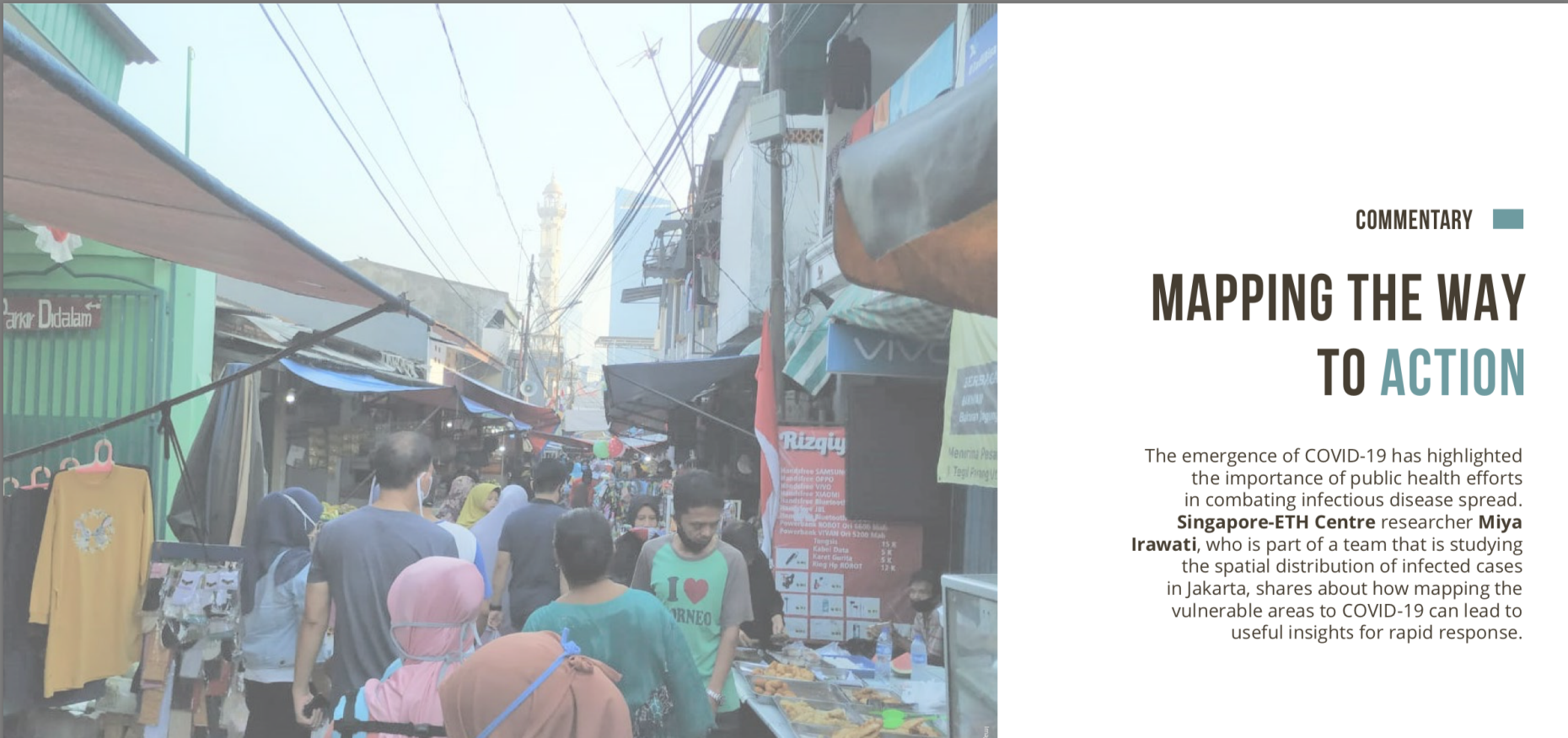Mapping the way to action
FCL researcher Miya Irawati shares how studying the spatial distribution of COVID-19 cases in Jakarta and mapping the vulnerable areas to infection can lead to useful insights for rapid response.

The emergence of COVID-19 has highlighted not only the importance of public health efforts in combating infectious disease spread, but how an underestanding of spatial distribution of infection can lead to useful insights for rapid response.
Future Cities Laboratory researcher Miya Irawati shares how she has been working with a team to map the vulnerable areas to COVID-19 in Jarkarta. She explains how the gathering and analysing of data is often a challenging task, in view of how data and the process of data collection is often fragmented and imperfect.
She found that at the local level, empowering residents has enabled them to contribute COVID-19-related data in a ground-up manner as open data, thereby improving the quality of data. At a time when a rapid response is crucial, a challenge of such magnitude is most effectively tackled as a joint effort by governments together with the community.
Refecting on the key takeways, Miya found that examining epidemiology with spatial dimensions can contribute to urban spatial planning and design, and thereby benefit societies in two ways. First, it contributes to infrastructure planning in cities, especially for clean water and waste management. Second, epidemiology is increasingly integrated into web-based Geographic Information Systems (GIS) to support spatial analysis across scientific disciplines.
Looking at urban planning and design through the lens of epidemiology is helping planners to rethink design in a way that safeguards the health and well-being of residents. Conversely, a spatial understanding of the activity patterns of residents will provide important insights on the vulnerability of areas to diseases and possible mitigation strategies.
The full article was published in external page RIE News, published by National Research Foundation Singapore.